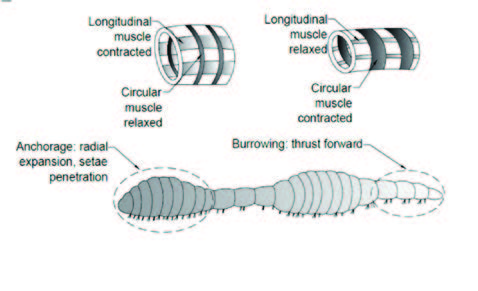ERC Files Patent for New Bio-inspired Approaches to Deep Foundation Systems
Outcome/Accomplishment
The Center for Bio-mediated and Bio-inspired Geotechnics (CBBG), an NSF-funded Engineering Research Center (ERC) headquartered at Arizona State University (ASU), filed a Utility Patent application for new deep foundation and anchorage systems modeled after plants and other living things that provide greater shaft resistance and load capacity than conventional foundations.
Impact/Benefits
The new systems use less material compared to conventional bored or driven pile foundations to provide the same or greater load-carrying capacity. These systems also require less fuel for material transportation and installation, reduce carbon emissions, and improve anchorage capacity against foundation uplift.
Explanation/Background
The CBBG research team developed the bio-inspired radially expansive pile (BREP) and the bio-inspired setae anchored pile (BSAP). The two systems were designed with inspiration from the anchorage behavior and structural design of earthworms, razor clams, kelp, and the lateral roots of plants.
The predicted load capacity for BREP is more than two times greater than for conventional piles, and is expected to greatly improve the efficiency and sustainability of foundation systems. Researchers at the Center described this approach in detail in a paper published in the Journal of Bionic Engineering, and filed an application to patent the two systems in 2019.
Location
Tempe, ArizonaStart Year
Energy and Sustainability
Energy, Sustainability, and Infrastructure
Lead Institution
Core Partners
Fact Sheet
Outcome/Accomplishment
The Center for Bio-mediated and Bio-inspired Geotechnics (CBBG), an NSF-funded Engineering Research Center (ERC) headquartered at Arizona State University (ASU), filed a Utility Patent application for new deep foundation and anchorage systems modeled after plants and other living things that provide greater shaft resistance and load capacity than conventional foundations.
Location
Tempe, ArizonaStart Year
Energy and Sustainability
Energy, Sustainability, and Infrastructure
Lead Institution
Core Partners
Fact Sheet
Impact/benefits
The new systems use less material compared to conventional bored or driven pile foundations to provide the same or greater load-carrying capacity. These systems also require less fuel for material transportation and installation, reduce carbon emissions, and improve anchorage capacity against foundation uplift.
Explanation/Background
The CBBG research team developed the bio-inspired radially expansive pile (BREP) and the bio-inspired setae anchored pile (BSAP). The two systems were designed with inspiration from the anchorage behavior and structural design of earthworms, razor clams, kelp, and the lateral roots of plants.
The predicted load capacity for BREP is more than two times greater than for conventional piles, and is expected to greatly improve the efficiency and sustainability of foundation systems. Researchers at the Center described this approach in detail in a paper published in the Journal of Bionic Engineering, and filed an application to patent the two systems in 2019.

